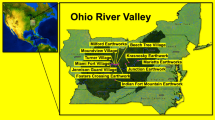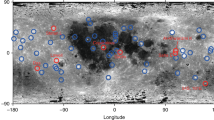Abstract
IN March 1966, while engaged on a geological survey of a portion of the Eucla Basin in Western Australia, we discovered two large iron meteorites. The two principal masses, lying some 600 ft. apart, are located on the Nullarbor Plain, to the north of the Transcontinental Railway (latitude 30° 47′ S., longitude 127° 33′ E.). Earlier reports of the sighting of a meteorite by a rabbit-trapper, now deceased, have led to several expeditions which failed, however, to discover these masses.
This is a preview of subscription content, access via your institution
Access options
Subscribe to this journal
Receive 51 print issues and online access
$199.00 per year
only $3.90 per issue
Buy this article
- Purchase on Springer Link
- Instant access to full article PDF
Prices may be subject to local taxes which are calculated during checkout
Similar content being viewed by others
Author information
Authors and Affiliations
Rights and permissions
About this article
Cite this article
WILSON, R., COONEY, A. The Mundrabilla Meteorite : a New Discovery in Western Australia. Nature 213, 274–275 (1967). https://doi.org/10.1038/213274a0
Received:
Revised:
Issue Date:
DOI: https://doi.org/10.1038/213274a0
This article is cited by
-
Chemical studies of the Mundrabilla iron meteorite by neutron activation
Journal of Radioanalytical Chemistry (1977)
Comments
By submitting a comment you agree to abide by our Terms and Community Guidelines. If you find something abusive or that does not comply with our terms or guidelines please flag it as inappropriate.



